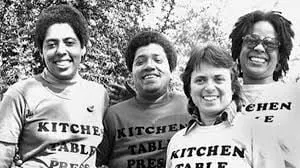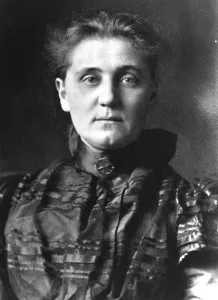Resisting Erasure and Reclaiming Our LGBTQ History
- Victoria A. Brownworth
- Oct 8, 2021
- 6 min read
October 8, 2021 queerforty.com

October is LGBTQ History Month. Here’s a shutout to some powerful queer women and queer women of color.
An unabashed lover of history who trained to be an historian, each October I write a plethora of stories about queer people who aren’t among the dozen or so LGBTQ people who are written about repetitively. I write most about gender nonconforming lesbians and trans people whose lives have been hidden from history or who have been erased as queer.
James Baldwin said, “People are trapped in history and history is trapped in them.” That snare of history Baldwin cites can trap us or we can reclaim it to free ourselves.
The politics of erasure is very real and as Baldwin suggests, dangerous. My longtime mentor Audre Lorde said, “If I didn’t define myself for myself, I would be crunched into other people’s fantasies for me and eaten alive.” She wrote this because how we are defined by others is suffocating and silencing. It erases who we really are. And as both Baldwin and Lorde have written brilliantly and persuasively, can kill us. Literally.
The only way to combat invisibility is through reclamation and that is a process of discovery and demarcation. Who are we really as LGBTQ people—are we who we are told we are via mainstream patriarchally driven white cis-het society, or are we our own society, our own culture and cultures, our own terms of record?
Black and brown LGBTQ people have been tasked with reclaiming their role in LGBTQ history because they have been elided from the mainstream view. Iconic figures like Barbara Smith, Michelle Cliff, Cherríe Moraga and Jeanne Córdova illumined this work and provided a template for others.
Much of reclamation is refutation. And there is a lot of that we must do to craft an accurate history of who we are individually and collectively as LGBTQ people. Seeing through our own lens rather than the lens of the oppressor is defining and definitive. It is, as lesbian scholar and theologian Mary Daly explained, “dis-covering” ourselves. Uncovering who we are by peeling back the layers of what has been written about us to find the truth that lies beneath. I have spent several decades doing that refutation and reclamation in the gay, feminist and even mainstream press.
I have written extensively about the desexualizing of lesbians like Jane Addams, Emily Blackwell, Barbara Jordan and Sally Ride. I have refuted the erasure of trans masculine and/or non binary people like Pauli Murray and Leslie Feinberg. I have refuted the narrative that butch lesbians like Stormé DeLarverie and effeminate gay men like Johnny Weir are not really gay because assimilationist politics demands that we reject butch dykes and flaming queens.
And the mere fact of my writing about so many LGBTQ people unknown to both the mainstream and our own community has been a refutation of the false narrative that all LGBTQ history must be written and crafted by white men from within a patriarchal construct and via a male gaze. As we say—it’s a lot. But it is also the reality in which we have lived post-Stonewall. Acceptability and respectability politics has been the mainstream approach to accessing LGBTQ civil rights for decades. Pre-internet personal ads often read “must be straight-acting.” The fact that the first civil rights mainstream advocacy groups fought for were the right to serve in the military and the right to marry speaks to an elitism embedded in our own history.

As an historian, I want to know what’s in the archives—what we are hiding, even from ourselves? I want to know more about the bravery of women who were burned as witches for being lesbians, the two-spirit people who were revered among Indigenous tribes, the social reformist women who were also lesbians, the Black and brown Civil Rights activists who were also lesbian, gay, bi and trans, the artists and writers whose work is taught while their sexual orientation or gender identity is kept hidden.
We are acculturated to view history through a white male cis-het lens. The current Republican-led fight over the teaching of Critical Race Theory is predicated on fear of changing the narrative that elides Black and brown people—fear that if we tell the truth about our collective history there will be discord.
Yet slavery existed. The genocide of Indigenous Americans happened. It is not divisive to tell the truth and to write out a history that includes those who have been subjugated and oppressed. This country—like all countries—was founded in and on bloodshed. Knowing the truth and learning about the lives that enslaved and genocided people lived in our historical past is essential to our building an equitable future.
So too is knowing our collective and intersecting histories as LGBTQ people. How can we hope to move toward a future in which LGBTQ people are fully enfranchised citizens if we aren’t grounded in our own history?
Joan Nestle wrote early on of the Lesbian Herstory Archive (LHA) she co-founded, “The roots of the Archives lie in the silent voices, the love letters destroyed, the pronouns changed, the diaries carefully edited, the pictures never taken, the euphemized distortions that patriarchy would let pass.” The motto of the LHA is “In memory of the voices we have lost.”
We have lost so many voices. This is the history we are searching for: the people who have been erased. Our history as LGBTQ people has always been a palimpsest.
Mabel Hampton was a Black performer during the Harlem Renaissance and, in the 1970s and ‘80s, a key member of the Lesbian Herstory Archives. At the 1984 New York City Pride March, Mabel Hampton said, “I have been a lesbian all my life, for eighty-two years, and I am proud of myself and my people. I would like all my people to be free in this world, my gay people and my Black people.”
As Hampton suggests, our histories often overlap–that palimpsest again. Hampton’s history was recorded because as is reported in the overview of her life in the list of LGBT Historic Sites in New York City, “in 1952, Hampton briefly served as a domestic worker in the childhood home of Joan Nestle.”
These intersections are how we find each other. I met Pauli Murray when I was a little girl because my parents were deeply involved in the Black Civil Rights movement. All these decades later I am writing about her as an historical figure in my own LGBTQ community. What if I had known that she was a trans masculine lesbian then? Would knowing that have allowed me to accept my own gender nonconformity sooner and with less trauma?
This is part of why history is so critical to our foundation as community—as marginalized peoples within a larger marginalized group. Had I known that I was not alone in cross-dressing as a teenager in the 70s, would that have altered my sense of self and made me feel more confident in my own body and sexual orientation? I have to assume it would. Knowledge is power.
As a lesbian and a radical gender nonconforming queer person, I have focused on uncovering the histories of people like me. The reveal has been exciting and painful, because erasure is always traumatic—which is why teaching real history, like Critical Race Theory, is so essential. We all deserve to know who we are and from whence we have come.
Adrienne Rich said, “False history gets made all day, any day” and that “Every journey into the past is complicated by delusions, false memories, false namings of real events.” Getting to the real history, not the false one, is crucial for us. Naming ourselves as LGBTQ people is critical. For example, lesbians, queer and gender nonconforming women are at the root of our feminist and social history. It isn’t just the nameless suffragists who were actually lesbians, or the nameless union workers who were lesbians. It’s not just the big-name lesbians like Jane Addams or Alice Hamilton, who made their mark on society but whose lesbianism was blotted out.
It’s not just the literary lions of our recent past like Lorde, like Rich. It’s who we are now—it’s our own words, our current history we are making every day. It’s our LGBTQ elders who are still alive but whose histories we have yet to record. Rich wrote “Lying is done with words and also with silence.”
For generations lies have been told about us as queer and trans people and our voices have been silenced. History is not just the past–it is also the present. This LGBTQ History Month we should write our own histories and archive them for our future and for those who come after us.


















Comments